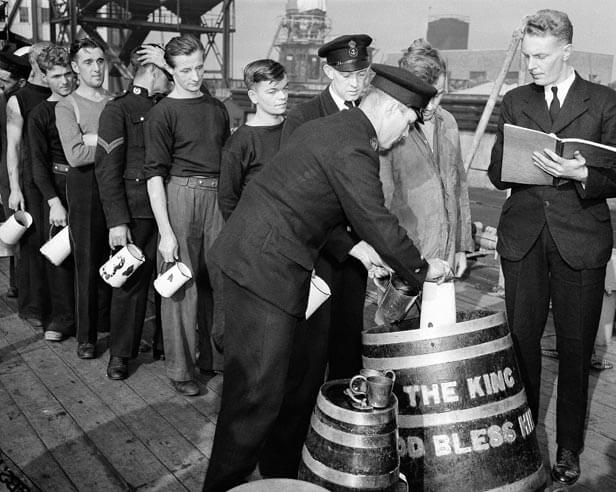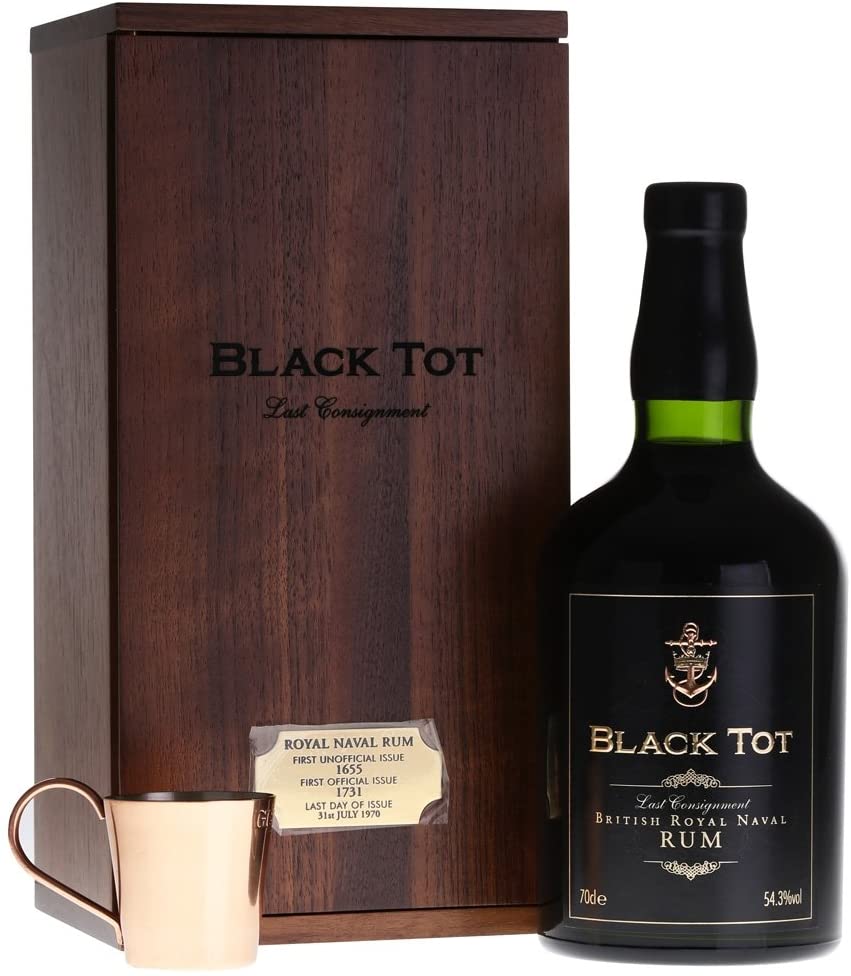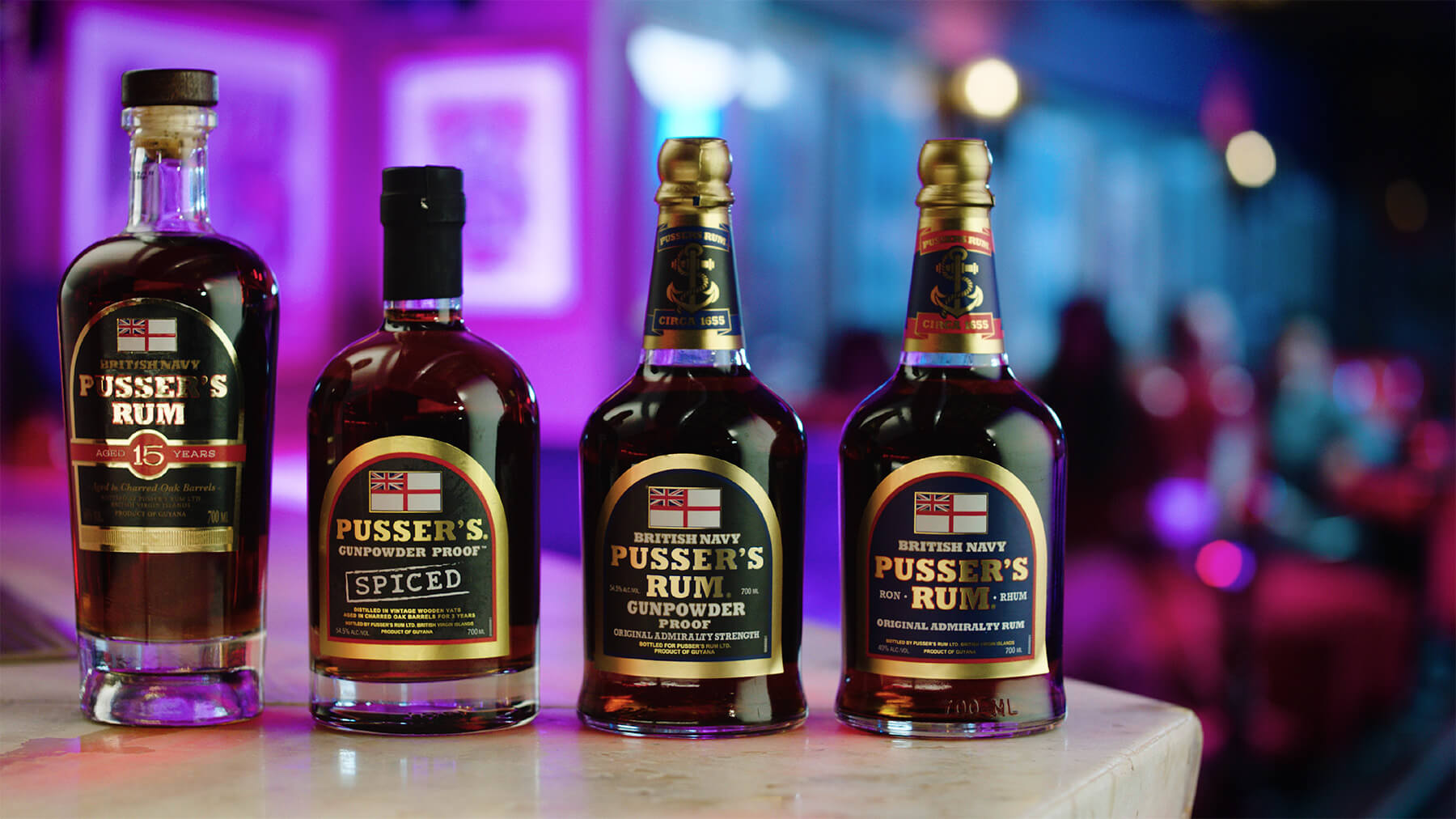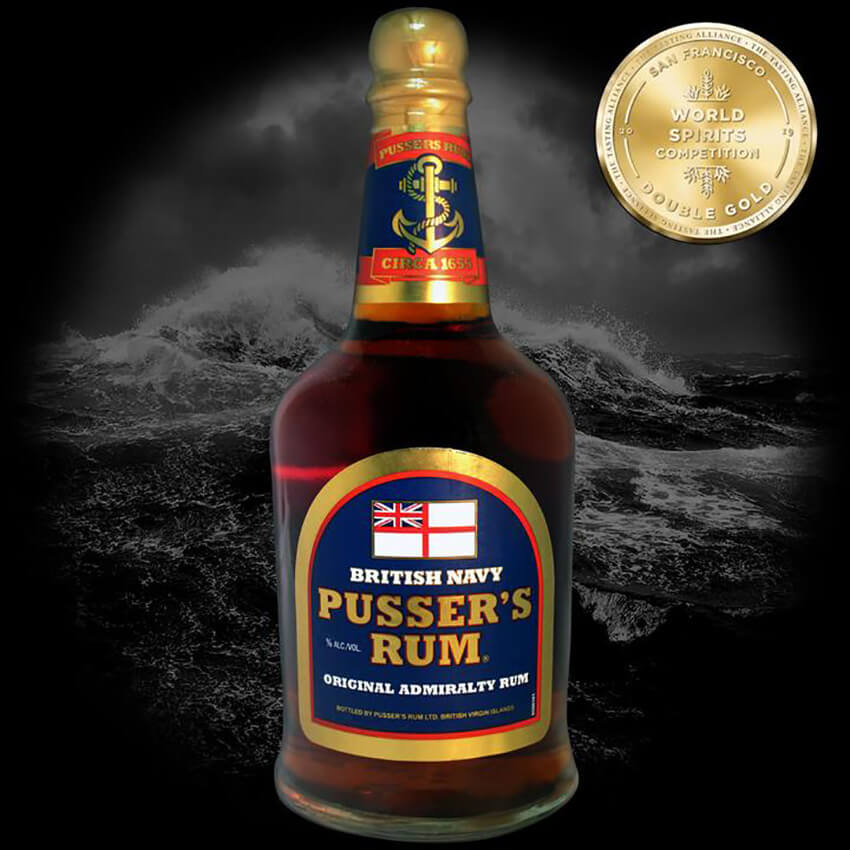Credits: Article and images by Ken Gargett @ Quill & Pad. See the original article here - https://quillandpad.com/2023/07/31/splice-the-mainbrace-pussers-rum-july-31st-is-black-tot-day-and-the-end-of-a-royal-navy-tradition-reprise/
———————————————————————————
Perhaps rum’s most famous moment came at the Battle of Trafalgar where Vice-Admiral Horatio Nelson had been killed. Legend has it that his crew was determined to preserve his body for transportation back to England, so he was placed in a barrel of rum. When they finally docked on return, the barrel was opened to remove the pickled body. Surprisingly, there was no rum remaining.
Allegedly, members of the crew had drilled a hole in the base of the barrel and drained the rum. And from that time on, rum was known as “Nelson’s Blood” by members of the Royal Navy. The term “tapping the admiral,” meaning to sneak liquor from a cask by means of a straw, also comes from this moment.
Endless variations of the story have arisen, but I prefer to stick with this version.
Royal Navy Rum
Rum was first used by the Royal Navy in 1655 after the capture of Jamaica, which meant that they had access to extensive stocks of rum (some of which was apparently used as a bribe to local pirates to prevent them from sacking their ports and ships).
The sailors’ daily ration was swapped from French brandy to rum. This decision was taken in 1688 by Samuel Pepys (1833-1703), secretary of the navy. Pepys is still famous today for a diary he kept in which we find the first mention of the wineries of Bordeaux, which were later to become famous as the First Growths, as any wine lover could tell you.
His entry on April 10, 1663 records, “Off to the Exchange with Sir J Cutler and Mr Grant to the Royal Oak Tavern in Lumbard Street, and there drank a sort of French wine called Ho Bryan, that hath a good and most particular taste that I never met with.”
The rum the Royal Navy was using was originally supplied “neat” to the sailors, that is 57 percent ABV thanks to the gunpowder test (explained below). It was sometimes mixed with lime juice, presumably helping to prevent scurvy (a mix that was compulsory from 1795).
Fifty-seven percent alcohol (ABV) came to be known as “Navy Strength” (a term often seen on gin bottles these days; “navy proof” is another description).
Why 57 percent (or these days marginally below that)? This was a time prior to the invention of the hydrometer (which happened in 1816), and the only way of testing the strength of the rum was to mix it with gunpowder and set the resulting concoction alight. It was at this strength that the mixture would ignite, proving (“proof”) that the rum was of legitimate strength and not adulterated.
The purser often held demonstrations to prove he was not shortchanging the men. A flash and the rum was overproof; nothing and it was under. But a steady blue flame and it was just right (sort of rum for Goldilocks?). This led to the term “overproof.”


Sailors lined up for their daily tots of rum
So at 57 percent rum was described as 100 proof. There are theories that the reverse was more important – the rum tested whether or not the gunpowder was of good quality (would not do to be caught at sea in a battle with the French and find your gunpowder was dodgy), but I like to think it was the rum that was the focus.
Why did the purser hold demonstrations as to the quality of the rum (the gunpowder test)? It was the job of the purser to manage shipboard supplies, and he had to ensure that they lasted the full voyage. Some were less scrupulous than others in their tasks and were not above a little dilution for profit. Pursers were not a beloved category on a ship, but usually there was little the sailors could do if indeed he was fiddling the books. Today, the role is titled “logistics officer.” Hardly has the same ring to it.
Then in 1740, the perfidious Admiral Edward Vernon gave orders to water down the rum, concerned about the effect alcohol was having on his sailors. The result was called “grog” (the admiral was known to wear a grogram cloak in rough weather and the theory is that this gave the rum its nickname). The split was the half pint of rum to a quart of water (1:4), although there are varying suggestions as to just how much it really was diluted.
The rum ration was cut in half in 1823 and then in 1850 reduced to the amount provided to the men until the fateful Black Tot Day.
The Royal Navy continued to give its sailors the daily ration of rum, which had come to be known as a tot, until July 31, 1970, although there were discussions in Parliament about the cessation of the ration as far back as 1850 – there was actually an “Admiralty Grog Committee” providing recommendations, and these resulted in the reduction of the tot, not its cessation. When the decision came to stop the tot it was made in late 1969, giving the men, and the Navy, seven months to adjust.
It was not the very end of the Royal Navy serving their sailors a ration of rum as should the queen, certain members of the royal family, or the admiralty issue an order to “splice the mainbrace,” a tot would be provided to the sailors. It doesn’t happen often. In the old days, an order to splice the mainbrace meant a double rum ration would be issued.
At the time of Black Tot Day, all things pertaining to the issuing of rum to the men had to be sold and it was even possible to buy the barrels – the famous Rum Tubs. There was plenty of excess rum (one would have thought that the navy could have found a use for it, but perhaps these were times of austerity).
The remaining rum went up for auction and was purchased by a former chief petty officer from World War II, Brian Cornford, who shipped it to a secure, bonded warehouse in Gibraltar. There are various versions as to what happened next but it seems much was sold to passing boats, and the final barrels were decanted into liter bottles, sealed with wax, and sold mostly to Royal Navy, RAF, and Army messes as well as a few selected pubs.
Every so often, a bottle pops up at auction where it is the subject of serious bidding.
Rum rations around the world


Black Tot – The Last Consignment
Other Commonwealth navies followed the tradition of issuing their sailors with daily rations of rum. The New Zealand Navy was the very last to issue a tot, stopping the practice on February 28, 1990.
Canada still occasionally provides a rum ration at a hefty 75 percent ABV and out of the commanding officer’s fund (so probably very rarely then). Canada put the kybosh on its daily rum ration back in 1972.
The Royal Australian Navy never joined the practice, although its sailors were allowed to partake if serving on a Royal Navy ship, but only up until 1921 (other sources suggest that in reality this meant the Australian sailors got their tots up until 1921).
Outside the Commonwealth, the United States Navy provided a ration of a half pint of spirits until 1842 when it was halved – the navy preferred to use American whiskey for its sailors rather than the more traditional rum. In 1862, it ceased completely. This was during the Civil War, of course, and the Confederate Navy continued the tradition, not least as a large number of British sailors served with the Confederate Navy at this time.
For the record, from 1850 until the practice was stopped in 1970 every sailor received his tot at midday. In reality, it happened between 11:00 am and noon, a period known as “up spirits.”
The tot was one-eighth of an imperial pint, which equated to 71 ml of rum at 95.5 proof, which was 54.6 percent ABV. The toast was usually “Stand fast the Holy Ghost,” although others seem to have been used as well.
Petty officers and higher ranks (senior ratings) received their tots neat, while those of the juniors were diluted (supposedly two parts water to make three-eighths of an imperial pint (213 ml). Officers did not receive rations, theirs having been withdrawn in 1881 (warrant officers lost theirs in 1918).
The tots were served from a barrel dubbed “the Rum Tub” made of oak, highly decorated, and reinforced with brass bands with the saying “The Queen, God Bless Her.”
Sailors had a choice. They did not have to accept their tots and would be identified in the records as “G” or “T” – “Grog” or “Temperance. Ts, in lieu of their tots, received three pence. Sailors under the age of 20 were “UA” (“under age”) and not permitted a ration.
One final tradition: tot glasses were always kept separate from any other glasses on board. They were washed on the outside but never inside (the theory being that any residue left on the inside would gradually make the tot stronger – any wonder the navy stopped the practice?).


Pusser’s rums
Pusser’s Rums
What, you may be wondering, does any of this have to do with today’s topic, Pusser’s Rums? Pusser’s took the exact recipe used by the Royal Navy when it discontinued the daily ration on July 31, 1970 and used it to make its rums, the only producer in the world to do so.
This dated back to 1979 when American sailor, Vietnam vet (he was shot down but survived and escaped), filmmaker, and tech entrepreneur Charles Tobias came to an agreement with the navy to produce this rum. Charles was also famous for spending time on his yacht with Tommy and Fifi. Tommy was a chimpanzee and Fifi was a cheetah.
Prior to this, the exact details of the rum and the blends (it was assumed to have various sources) had been a closely guarded secret. Tobias agreed to pay royalties, known as the “tot fund,” to the navy. Consequently, Pusser’s Rum Ltd. was set up in Tortola, in the British Virgin Islands, to both bottle and distribute the rum.
The actual source? Plenty will suggest a blend of rums from five Caribbean countries. Others say the rums are sourced from Guyana and that seems to be the case today, though from when is anyone’s guess (2019 seems to be a popular guess). One thing we know is no coloring agents are used.
Anyone keen on reading more about this and navy rums in general should look to Matt Pietrek and his Cocktail Wonk site.
One interesting thing – at one stage Tobias sold the operation to Jim Beam but then purchased it back.
And where does the name Pusser’s come from, you ask? It is Royal Navy slang for “purser.”
Tasting notes: Pusser’s Rums
I have tasting notes for three of Pusser’s finest. It’s worth noting that exact sources and blends are very much subject to rumor and gossip.
British Navy, Pusser’s Rum, Original Admiralty Rum: The famous Admiralty blend that dates back to that day in July 1970. Aged for a minimum of three years in charred oak bourbon barrels, Guyana is seen as the source today. 40 percent.


Pusser’s Original Admiralty Rum
A bronze-brown color. Tropical aromatics. Hints of caramel. Mango, frangipanis, white chocolate, dried fruit notes, and pineapple. Has a little fire on the finish but excellent length. A delicious tropical-influenced rum.
———————————————————————————
Credits: Article and images by Ken Gargett @ Quill & Pad. See the original article here - https://quillandpad.com/2023/07/31/splice-the-mainbrace-pussers-rum-july-31st-is-black-tot-day-and-the-end-of-a-royal-navy-tradition-reprise/











